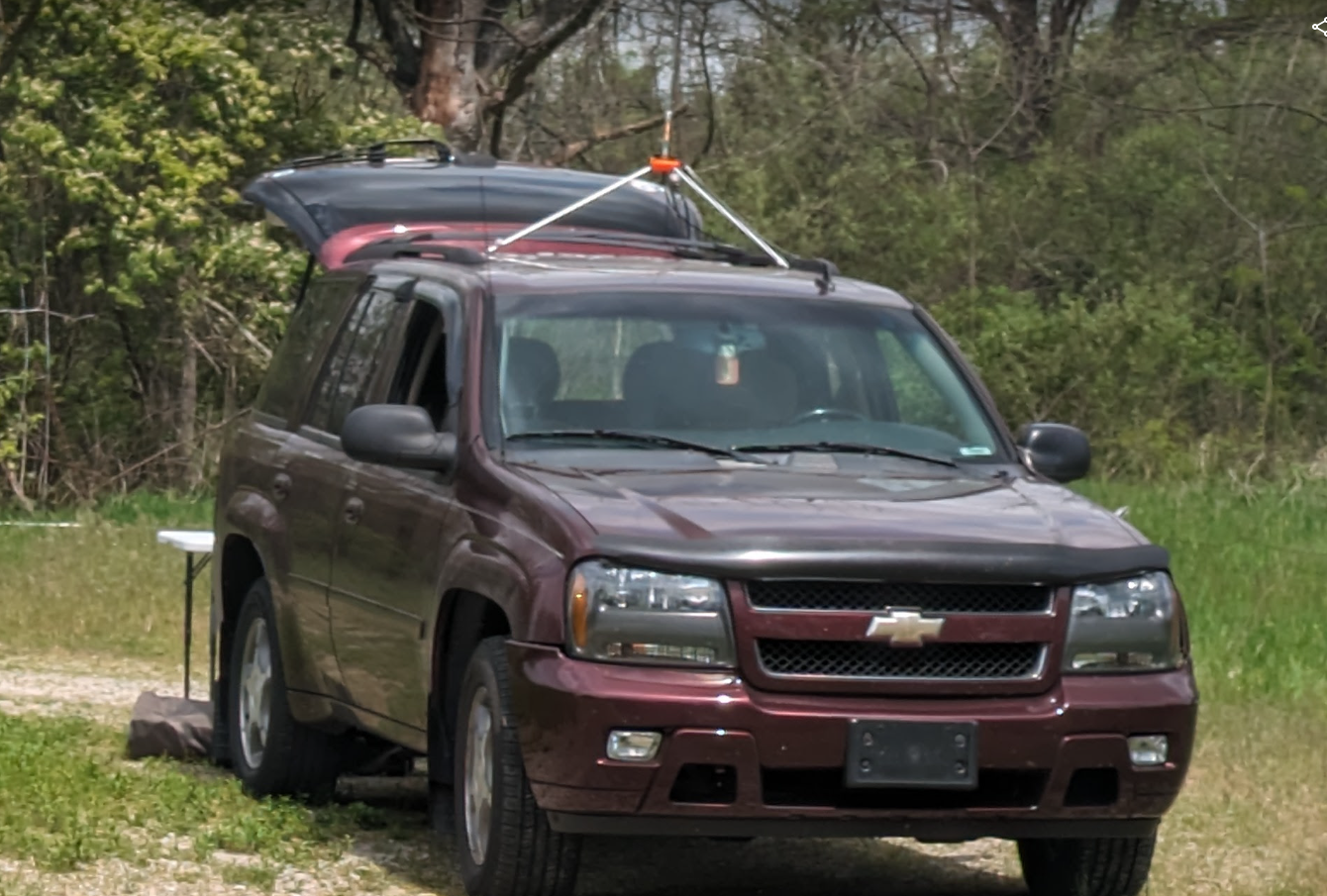 |
| Atterbury Fish and Wildlife Area - US-4183 |
So after I got off work today, I loaded up the gear and headed to the scene of the skunking I got in April. Today was upper 70's, sunny, with a slight breeze...for July this is what we call perfect weather to be outside.
I arrived at about 4:45PM and was setup and on the air by 5PM. I'm getting good at setting up and tearing down quickly. I still use a written checklist when loading back up to make sure I don't leave anything in the park. It's happened.
 |
| Happy Camper |
 |
| KX2 Radio and Eagle One Vertical Antenna with a small hand key |
 |
| Stone Arch Lake and Ominous Clouds |
 |
| All Packed up and Ready to Leave |
So on the way out today I decided to drive through the area and go over by Camp Atterbury. Camp Atterbury at one time was a prisoner of war camp for Italian and a few German soldiers during World War II. Currently it is an army camp where we train our troops, and foreign troops.
This is my dad. Sgt Major William J Murrey, retired. He served in the US Army and later in the Indiana National Guard. He passed away in January 2016 at the age of 79. Pop was assigned to Camp Atterbury for a number of years.My kids went to Cub Scout Day Camp at the park next to Camp Atterbury, and my dad and a couple other guys showed up in Humvees and took the kids on some Humvee rides, and let them get a good look at the dining facilities at Camp Atterbury, I believe they were even permitted use of the on base pool as well. This had to be 35 years ago, and those kids still talk about that to this day. So I like to go to Atterbury to operate for POTA, I kind of feel a connection here. Dad was a true patriot, loved his family, loved his country, and served the Lord.
 |
| Veterans Memorial at Camp Atterbury |
Before I left the property entirely, I stopped at the Camp Atterbury Veterans Memorial Park for a look around.
 |
| Open from Sunrise to Sunset |
 |
| Huey Helicopter UH-1M Iroquois - Used in Vietnam |
 |
| Lots of old military vehicles in the Memorial Park |
I walked around the Memorial Park for about 45 minutes looking at all the vintage equipment they have on permanent display. When it was time to go I drove back over by the lake and found this little duck family enjoying a early evening swim.
Until next time!
de KB9BVN

















